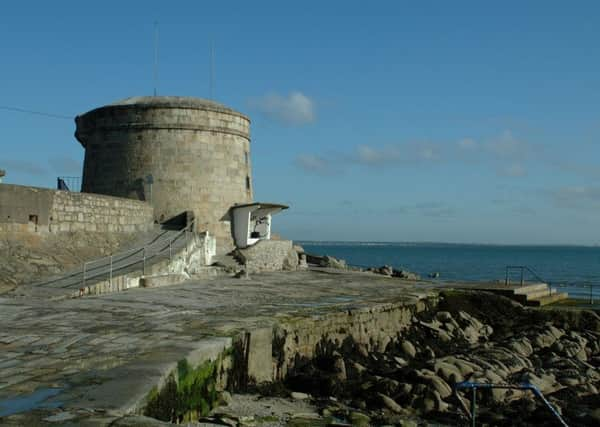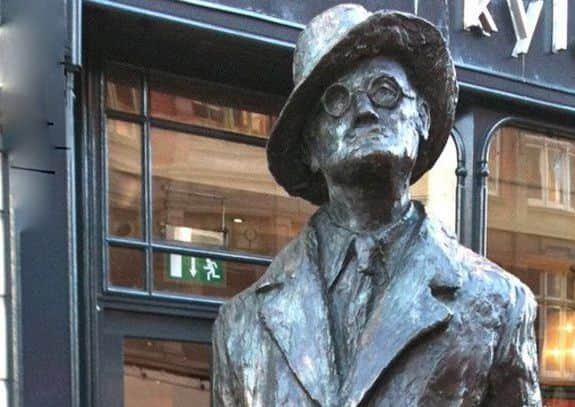Travel: Dublin, Ireland


This Tuesday, in the small harbour settlement of Sandycove, eight miles south of Dublin, men and women in Edwardian dress will flock to a squat stone tower, as they do every 16 June, in celebration of what many regard as the greatest novel ever written – Ulysses by James Joyce. The opening scene of the book takes place at this very spot, and as few people make it past the first two or three chapters of this famously difficult work, the Sandycove Martello tower has become emblematic of the novel as a whole.
One of its fictional residents, Buck Mulligan, thought of it as the “omphalos” – the navel, or HQ – of his plan to “Hellenise” Ireland, and today it is the omphalos of the global Joyce industry. As well as being the starting point for Bloomsday excursions (the day is named in honour of Leopold Bloom, one of the book’s main characters), it’s also home to a Joyce museum, open 365 days a year and a repository of many personal items of Joyce – the writer spent five nights in the tower in 1904. Climb to the parapet yourself and observe for yourself “the snotgreen… scrotumtightening sea” in Scotsman’s Bay (yes, it’s really called that; and yes, Buck Mulligan really did describe its waters in those terms).
Advertisement
Hide AdAdvertisement
Hide AdSandycove is part of the town of Dun Laoghaire. Until recently, only the much older residents would have thought of Dun Laoghaire as a distinct town from Dublin, with which it is contiguous. In the 1990s, however, County Dublin was broken up into three new counties, one of which is Dun Laoghaire-Rathdown, home to 200,000 people and with a character all of its own. To a large degree that character is attributable to the literature that has made Dun Laoghaire famous to the world.


And it’s not a one-man show either: while Joyce is rightly exalted in these parts, the area also has links with the two other godheads of the Irish modernist trinity, Flann O’Brien (who spent most of his life here, in Blackrock) and Samuel Beckett (who was born and raised here, in Foxrock). But there are many others: George Bernard Shaw, Maeve Binchy, JM Synge, Hugh Leonard and a host of living writers – from Hugo Hamilton and Colum McCann to Joseph O’Connor and Paul Murray – who are all intimately connected to Dun Laoghaire and its surrounds. To really get to know this genteel maritime borough, you could do a lot worse than to use the collective genius of Irish letters as your guide.
A good place to start – even better than the Joyce tower – is the gorgeous village of Dalkey, just along the coast from Sandycove, past the Forty Foot bathing spot. If approaching in this direction you’ll pass between two medieval tower houses on the main street. The one on the left, now Dalkey Castle and Heritage Centre, serves as the town hall, and also houses a Writer’s Gallery featuring portraits of every famous scribe associated with the area. Be sure to check the centre’s Bloomsday schedule if you’re about, as it’ll have a programme of events for the occasion. There’ll be a lingering booky buzz around the place anyway, as the Dalkey Book Festival will have finished at the weekend. (It started this year on 11 June, and is due to wrap up tomorrow.)
Dalkey has inspired writers over the years with its mix of quaint village charm and sublime topographical drama. Its most beloved resident, the dearly missed Maeve Binchy, described it as “a little town with two magic harbours, and hills and views without equal in the land… I feel a twinge of sympathy for all those who come out here for the day or for a quick visit. They can sense it would be a great place to live.” Another writer, Flann O’Brien, in his last novel The Dalkey Archive, called it a “vestibule of a heavenly conspection” – in other words, a gateway to paradise. Climb the hill along the magnificent Vico Road and it’s easy to see what fired such prose. If you take the right of way known as the Cat’s Ladder up to Torca Road, you may pass Torca Cottage, childhood home of George Bernard Shaw, and one of the humbler properties in this district of crenellated and turreted Victorian mansions.
The prospect from the top of Dalkey Hill is wonderful, but take the short walk to the adjacent obelisk-topped Killiney Hill for even better views. Far below, the sea tickles the coastline into a gentle bow reminiscent of the Bay of Naples – a comparison that has led to a number of streets and roads in the area bearing Italian names. One of these is Sorrento Terrace – an almost ridiculously picturesque Regency-era terrace rooted like sculpted bedrock near the point where the coastline turns sharply round Killiney Head to join Scotsman’s Bay again.
The architecture of Dun Laoghaire town centre is also characterised by Regency and Victorian architecture. The quadrangle of Crosthwaite Park is one of its best urban setpieces – and has included playwright JM Synge (and Bob Geldof!) in its census of residents. The town undoubtedly shows its best face to the sea; a stroll on the promenade or the East Pier, followed by an ice-cream at Teddy’s hole-in-the-wall kiosk opposite the old baths, is a weekend routine for many Dubliners. The pier is mentioned in Samuel Beckett’s play Krapp’s Last Tape as the location where Krapp experiences an epiphany in a storm: “The vision at last… the fire that set me alight… the foam flying up in the light of the lighthouse and the wind gauge spinning like a propellor…” Beckett himself grew up, and lived until his 30s, in Foxrock, about two miles back from the town. This leafy and atmospheric suburb is an essential stop for anyone interested in Beckett’s work (take the 46A bus up the hill), as its personality colours all his writing. Even in his last years, the master of despair claimed he “walked those backroads with closed eyes”.
If you’re on a visit to Dublin do take a few hours to explore Dun Laoghaire-Rathdown; it’s a 20-minute ride on the coastal Dart train from the city centre. And if you’re interested in Irish writing, make a trip to the borough an essential part of your itinerary. This is the true heart of literary Dublin, and one of the great spawning grounds of world literature, on a par with the Rive Gauche, Bloomsbury or Brooklyn. Consider arranging a break around Bloomsday, or one of the two world-class literature festivals that the borough puts on every year: the aformentioned Dalkey Book Festival, or Mountains to Sea, which takes place in March. The latter is centred on the swish new dlr LexIcon – a starkly and appropriately modern temple to books that thrusts through the grain of the Victorian seafront like a beacon for the next generation of literary innovators.
• Green Glowing Skull by Gavin Corbett, published by 4th Estate, is out now, £14.99.